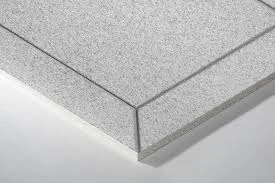Nov . 15, 2024 13:31 Back to list
fiberglass ceiling grid
Understanding Fiberglass Ceiling Grids A Comprehensive Overview
Fiberglass ceiling grids have emerged as an innovative solution for modern construction and interior design. These grids, which serve as the structural framework for suspended ceilings, offer several advantages over traditional materials. In this article, we will explore what fiberglass ceiling grids are, their benefits, applications, and installation considerations.
What Are Fiberglass Ceiling Grids?
Fiberglass ceiling grids consist of pre-manufactured panels and grid systems made primarily from fiberglass-reinforced plastic. This combination allows for a lightweight, durable, and corrosion-resistant ceiling support system. Designed to accommodate various ceiling tiles and panels, fiberglass grids provide an aesthetically pleasing finish while ensuring reliability and ease of installation.
Benefits of Using Fiberglass Ceiling Grids
1. Lightweight Construction One of the most notable advantages of fiberglass ceiling grids is their low weight. This makes them easier to handle and install compared to metal or wooden alternatives, which can be cumbersome and require more labor.
2. Corrosion Resistance Unlike metal grids, fiberglass grids are resistant to rust and corrosion. This property makes them ideal for environments with high humidity or exposure to harsh chemicals, such as kitchens, laboratories, and industrial facilities.
3. Non-conductive Fiberglass is a non-conductive material, which means it does not transfer electricity. This characteristic is particularly important in commercial settings where electrical safety is a concern.
4. Design Flexibility Fiberglass ceiling grids accommodate different styles and designs, allowing architects and designers to create versatile and visually appealing interiors. They can be painted or finished in various ways to match the overall theme of the space.
5. Ease of Maintenance The smooth surface of fiberglass ceilings makes them easy to clean. Regular dusting and occasional washing can help maintain their appearance, and damage can often be repaired with minimal effort.
6. Eco-Friendly Options Many manufacturers offer fiberglass ceiling grids made from recycled materials. These eco-friendly options are increasingly popular in today’s environmentally conscious market.
fiberglass ceiling grid

Applications of Fiberglass Ceiling Grids
Fiberglass ceiling grids have found applications in various sectors, including commercial, residential, and industrial environments. Here are a few common applications
- Commercial Spaces Offices, retail stores, and restaurants often utilize fiberglass ceiling grids for their lightweight and aesthetically pleasing properties. The ability to integrate lighting and HVAC ducts seamlessly is a significant advantage in these settings.
- Healthcare Facilities Hospitals and clinics benefit from the non-corrosive and easy-to-clean properties of fiberglass. These ceilings also help maintain infection control in sensitive areas.
- Food Processing Plants The audience of food safety compliance mandates often prefer fiberglass grids for their resistance to moisture and ease of sanitation, making them ideal for food processing and storage areas.
- Educational Institutions Schools and universities utilize fiberglass grids to create acoustically sound environments for classrooms and lecture halls, ensuring optimal learning conditions.
Installation Considerations
While fiberglass ceiling grids may offer many advantages, careful consideration must be given to their installation. Proper planning is essential to ensure that the grid aligns well with the structural components of the building. It's also vital for installers to follow manufacturer guidelines for optimal performance and aesthetics. Ensuring that the tiles fit securely within the grid will prevent sagging and maintain the desired ceiling height.
Additionally, specific tools and hardware are required for installation, so it's beneficial for contractors to be knowledgeable about the types of systems available. Whether a project involves new construction or a renovation, collaborating with professionals experienced in fiberglass installation can make a significant difference.
Conclusion
Fiberglass ceiling grids represent a forward-thinking solution for various construction and design needs. Their unique combination of lightweight construction, durability, and aesthetic flexibility makes them an attractive choice for both commercial and residential applications. As industries continue to prioritize safety, efficiency, and design, fiberglass ceiling grids are likely to become increasingly prevalent in future building projects. Understanding these benefits and applications allows consumers and professionals to make informed decisions about their ceiling choices, ensuring functional and appealing indoor environments.
-
Quality Ceiling Trap Doors & Access Panels | Easy & Secure AccessNewsAug.30,2025
-
Durable Ceiling T Grid Systems | Easy InstallationNewsAug.29,2025
-
PVC Gypsum Ceiling: Durable, Laminated Tiles for Modern SpacesNewsAug.28,2025
-
Pvc Gypsum Ceiling Is DurableNewsAug.21,2025
-
Mineral Fiber Board Is DurableNewsAug.21,2025
-
Ceiling Tile Clip Reusable DesignNewsAug.21,2025







